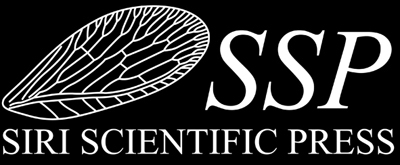News — Monograph series
Forthcoming title: Ichthyosaurs from the Early Jurassic of Britain
Posted by David Penney on
We are pleased to announce the following new title in our Monograph Series currently in production for 2017: Ichthyosaurs from the Early Jurassic of Britain by Graham P. Weedon and Sandra D. Chapman. Ichthyosaurs were marine reptiles that date from the Mesozoic Era when the dinosaurs dominated the land. Although now extinct, occasionally the preservation of fully articulated skeletons including, exceptionally, their soft-parts allow the reconstruction of many details of ichthyosaur biology. In Britain the largest collection of ichthyosaur fossils is held by the Natural History Museum (NHM) in London with many beautiful specimens on display. This collection, which continues...
British Polacanthid Dinosaurs - Addendum
Posted by David Penney on
As is often the case with published works, some errors do creep in that are not noticed until the book has been printed. The purpose of this blog post is to correct two small errors in our monograph on British Polacanthid Dinosaurs by William T. Blows. Click the cover image to go to the product page But first, a couple of weeks ago I took my daughter to the Natural History Museum in London where she was able to get hands on with spikes, plates and other fossilized elements of these remarkable dinosaurs. If you like dinosaurs then the Natural...
- 0 comment
- Tags: Addendum, Monograph series, News
New Fossil Scorpion 290 Million-Years-Old Sheds Important Light on their Evolutionary History
Posted by David Penney on
Scorpion fossils are possibly more diverse than you might expect. 128 fossil species are currently recognized, with some dating back as far as the Silurian period. They occur in various different rock types and also, more rarely, as inclusions in amber. Fossil scorpion from the Cretaceous Crato Formation, Brazil A new discovery, representing the first complete scorpions from the Permian period, has just been announced at a conference held in Germany. The fossils originate from a recently excavated locality in Chemnitz, Germany. It appears that explosive volcanism preserved the remarkable specimens in situ as part of the palaeosol and bedrock...
- 0 comment
- Tags: Monograph series, New research, News
New approaches to the evolution and identification of wasps
Posted by David Penney on
Wing venation patterns in insects provide useful characters with which to classify living and fossil insects. Recently, quantification of its shape using landmarks (morphometric analysis) has increased the potential of wing venation to distinguish individual taxa such as species. However, the use of wing landmarks in elucidating how the species are related to one another (phylogenetic analyses) remains largely unexplored. In research just published in the journal Cladistics, Adrien Perrard and colleagues tested landmark analysis under parsimony (LAUP) to include wing shape data in a phylogenetic analysis of hornets and yellow jacket wasps. Using 68 morphological characters, nine genes and wing...
A new genus of British dinosaur!
Posted by David Penney on
A new genus of British dinosaur has just been formally erected for Polacanthus rudgwickensis described by William T Blows in 1996. The specimen consists of one nearly complete dorsal vertebra, a dorsal vertebral centrum, an anterior caudal vertebra, fragments of other vertebrae, the proximal end of the left scapula with a fused coracoid fragment, a distal end of a humerus, a nearly complete right tibia, rib fragments, two dermal bones and many small fragments. Dorsal vertebra of the new genus in posterior, lateral and anterior views The new genus, Horshamosaurus Blows, 2015 is formally erected, justified and diagnosed, along with...
- 0 comment
- Tags: Monograph series, New release, News
